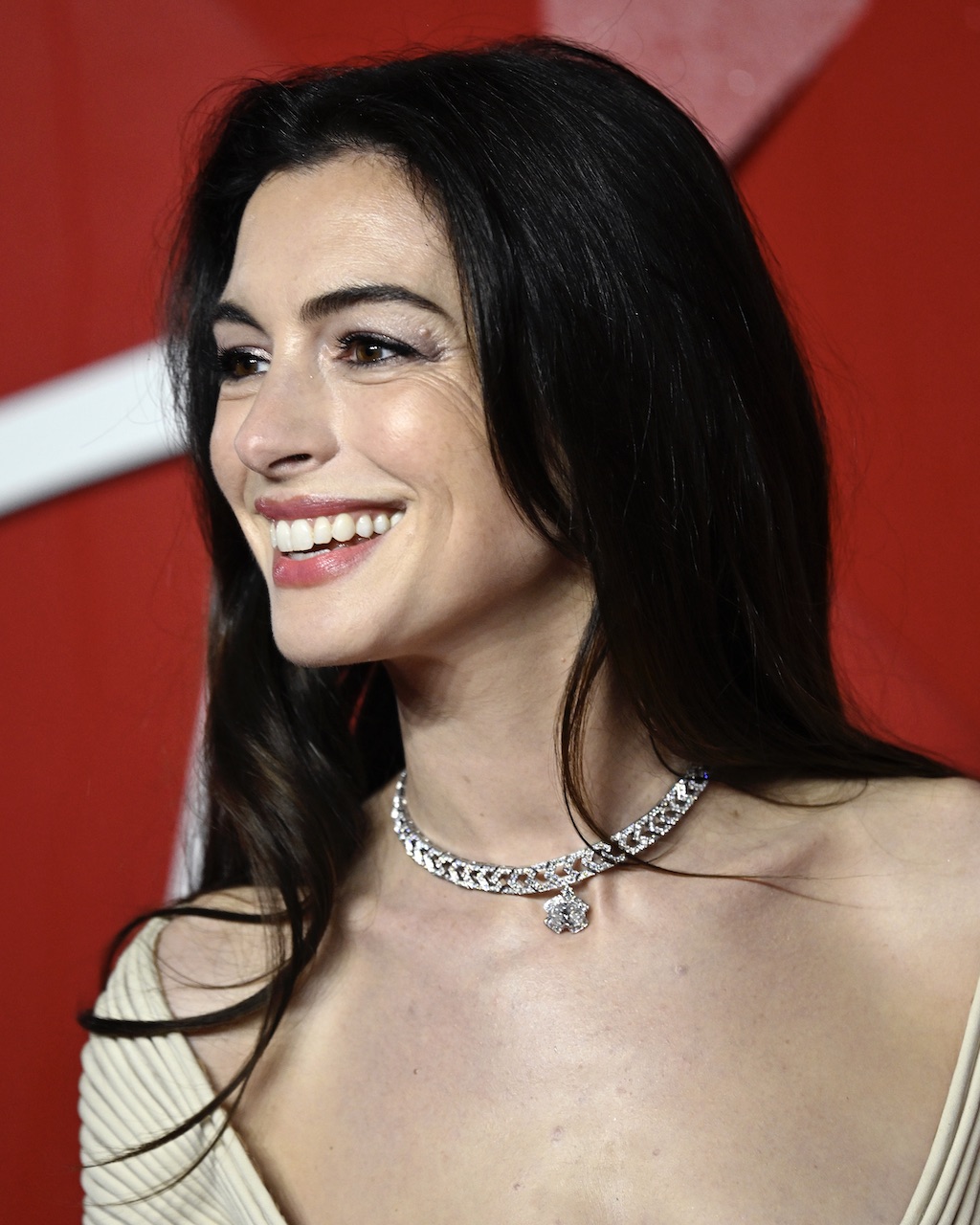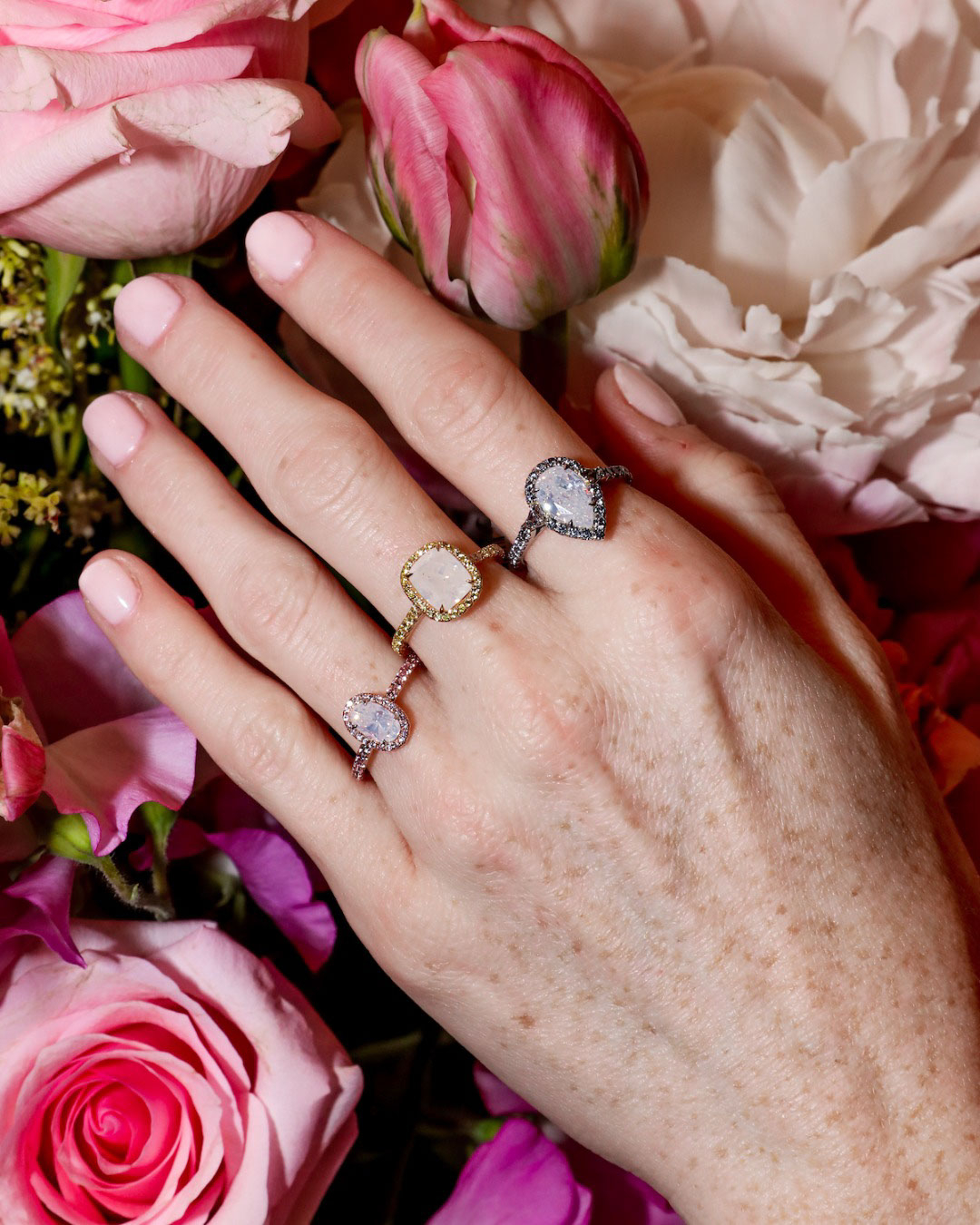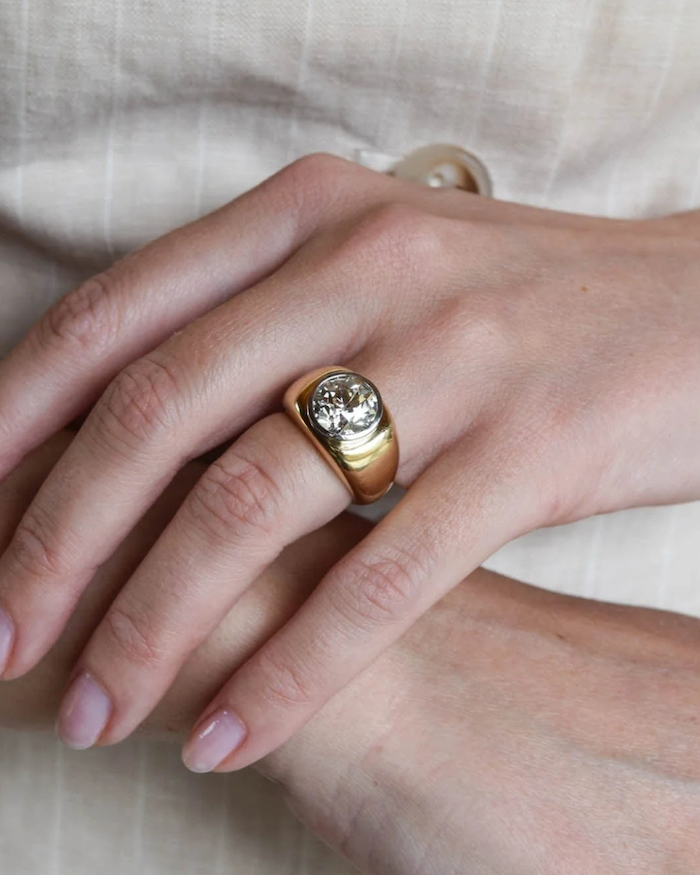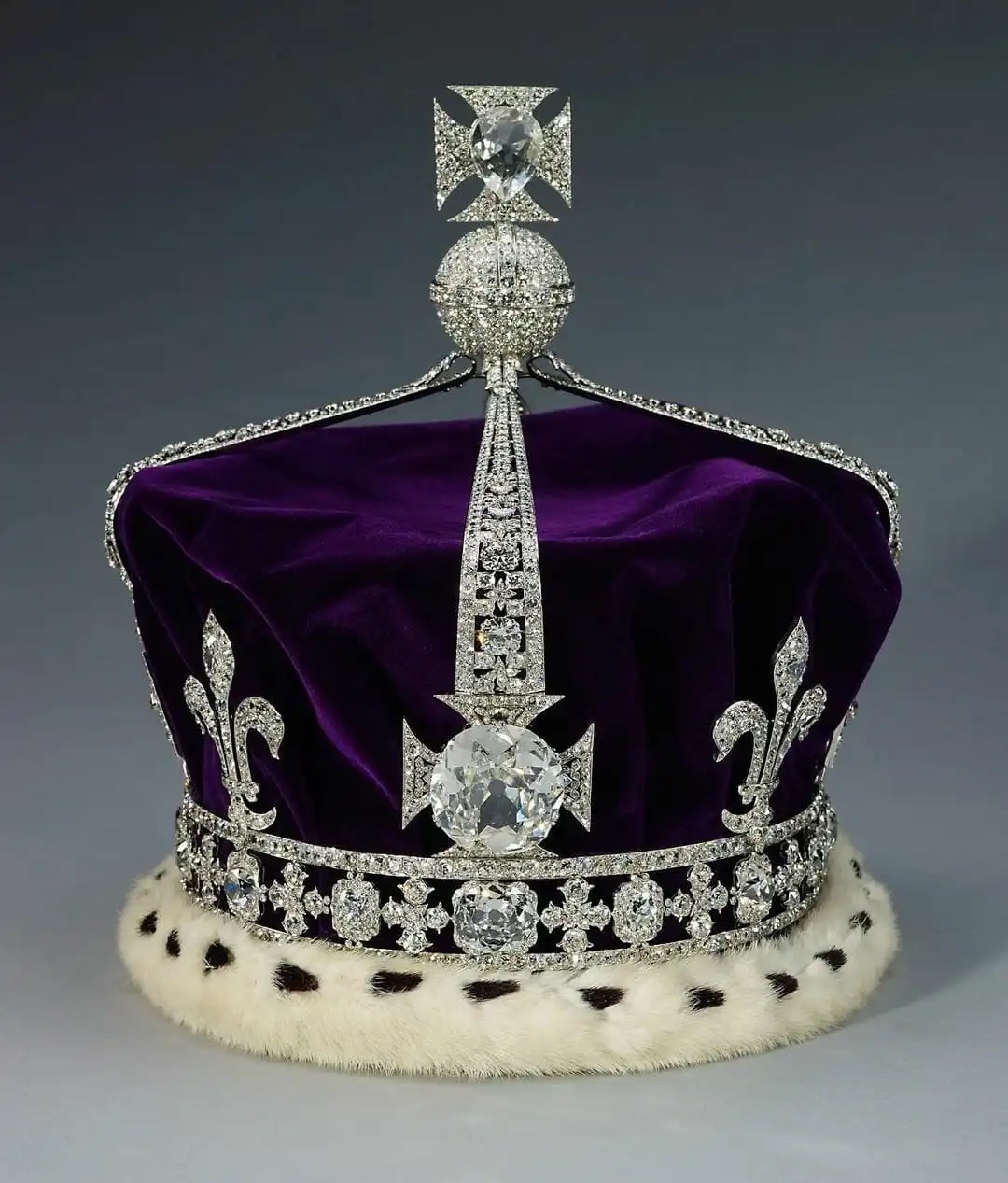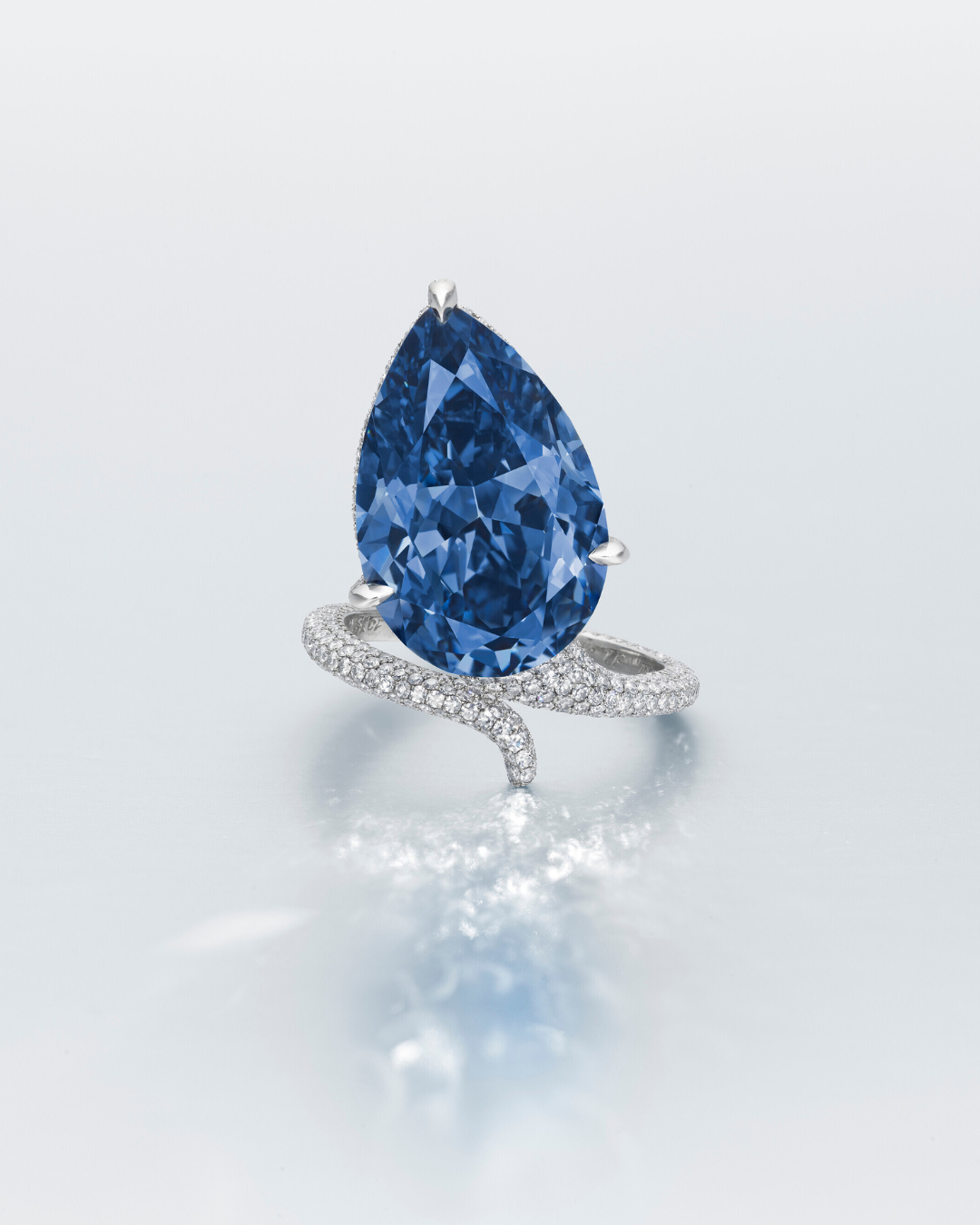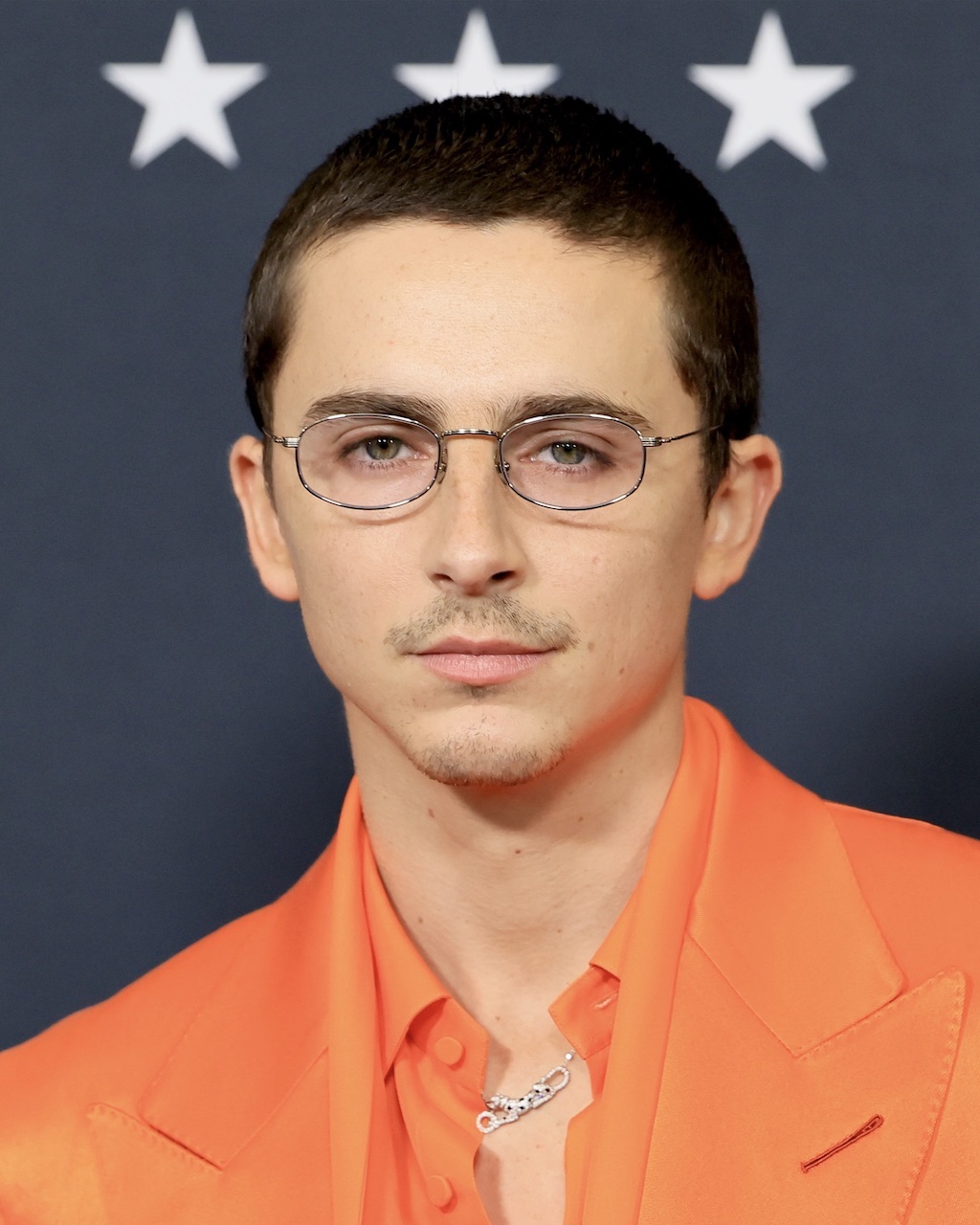Historic Diamonds / Famous Diamonds
The World’s Most Famous Fancy Stones in Every Diamond Color
By Grant Mobley, Updated June 27, 2025
Discover the world’s most iconic natural colored diamonds—from the legendary Hope Diamond to the rarest red and pink stones ever found. The diamond color of these vibrant, billion-year-old treasures combine unmatched rarity, value, and history, making them some of the most celebrated and valuable gems on Earth.

Mrs. Oscar Chapman, wife of the Secretary of the Interior, displays the Hope Diamond at the premiere of the $20,000,000 “Court of Jewels” benefit at the American Security and Trust Co. (Photo: Bettmann / Getty)
The stories behind the most famous natural red, yellow, green, pink, and blue diamonds will have you dreaming of every diamond color. When humans first discovered natural diamonds around 3000 years ago, they immediately knew that the stones were special. Some even believed that they possessed magical properties.
Ready to explore the meaning, rarity, and beauty behind unique diamond color? Discover some of the world’s rarest and most spectacular fancy color stones below.
The Fascinating History Behind Fancy Stones and Diamond Color
First called vajra, meaning ‘thunderclap’ in Sanskrit, some thought that lightning bolts formed natural diamonds; others theorized that they were the tears of God. As their rarity and value were realized, the enchantment around diamonds grew. Needless to say, it didn’t take long before the most special diamonds became the property of the world’s wealthiest and most influential people in history.
As it turns out, many of the prominent diamonds that drew astute purchasers were prized not only for their size and origin but also for their unique diamond color. These fancy-colored diamonds have since passed through countless hands around the globe, adding to their fame and story.
Meet the Expert

- Grant Mobley is the Jewelry & Watch Editor of Only Natural Diamonds.
- He is a GIA Diamonds Graduate.
- He has over 17 years of jewelry industry experience, starting with growing up in his family’s retail jewelry stores.
The Moussaieff Red Diamond
Diamond Color: Red
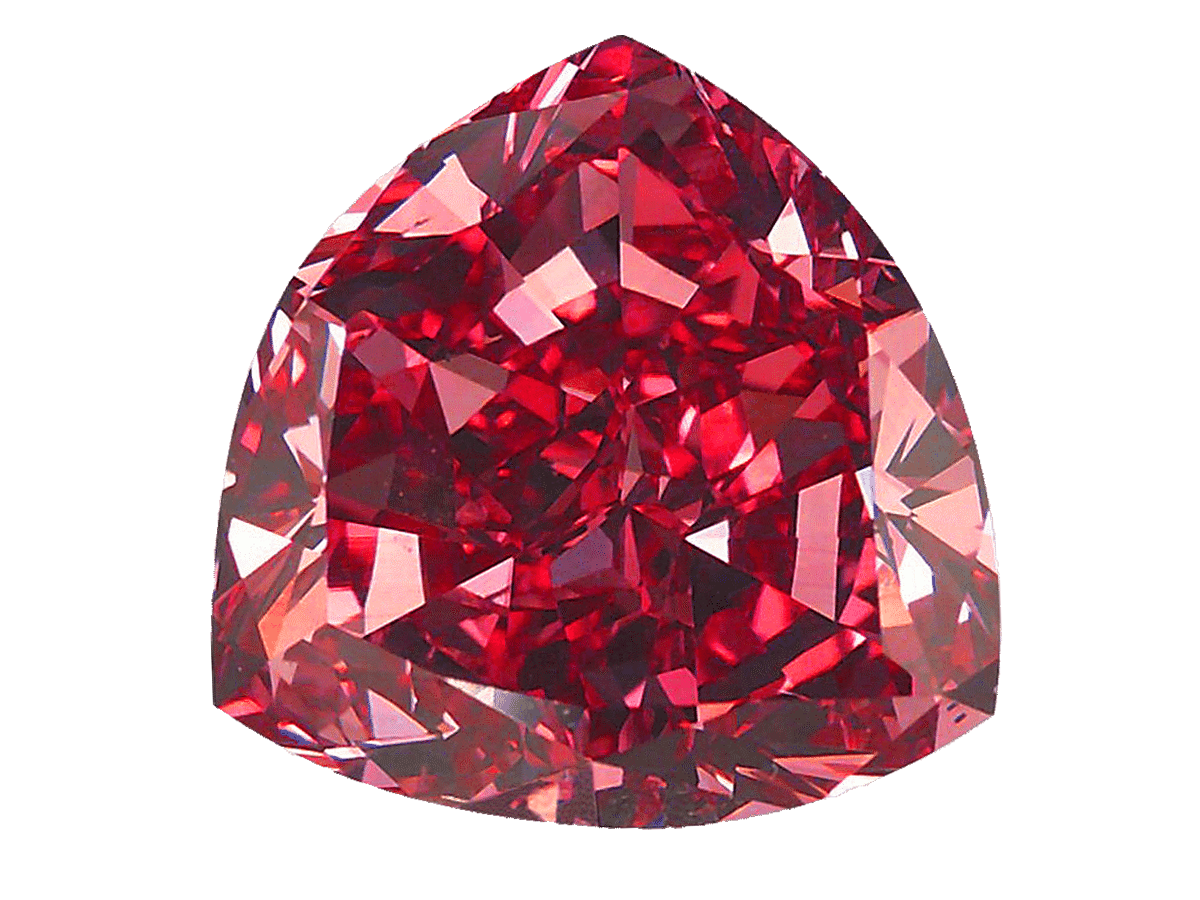
Experts widely regard the Moussaieff Red Diamond as one of the most extraordinary diamonds in existence—and for good reason. Weighing 5.11 carats, this Fancy Red diamond holds the record as the largest red diamond ever certified by the Gemological Institute of America. Miners discovered the 13.9-carat rough in Brazil in the 1990s, and legendary diamond dealer William Goldberg purchased and expertly cut it, naming it the “Red Shield” for its vivid color and distinctive shield-like shape.
Red diamonds are considered the rarest of all natural colored diamonds. Unlike blue or yellow, which derive their diamond color from trace elements, red diamonds owe their hue to rare distortions in their atomic lattice caused by intense pressure during formation, making them as scientifically fascinating as they are visually stunning.
In 2001, London-based Moussaieff Jewellers acquired the stone, renamed it the Moussaieff Red Diamond, and have retained ownership ever since. Its fame grew even more after the Smithsonian featured it in the iconic 2003 “The Splendor of Diamonds” exhibit, where it appeared alongside other legendary gems such as the De Beers Millennium Star and the Heart of Eternity. Today, it remains a masterpiece of rarity, beauty, and provenance.
The Tiffany Diamond
Diamond Color: Yellow
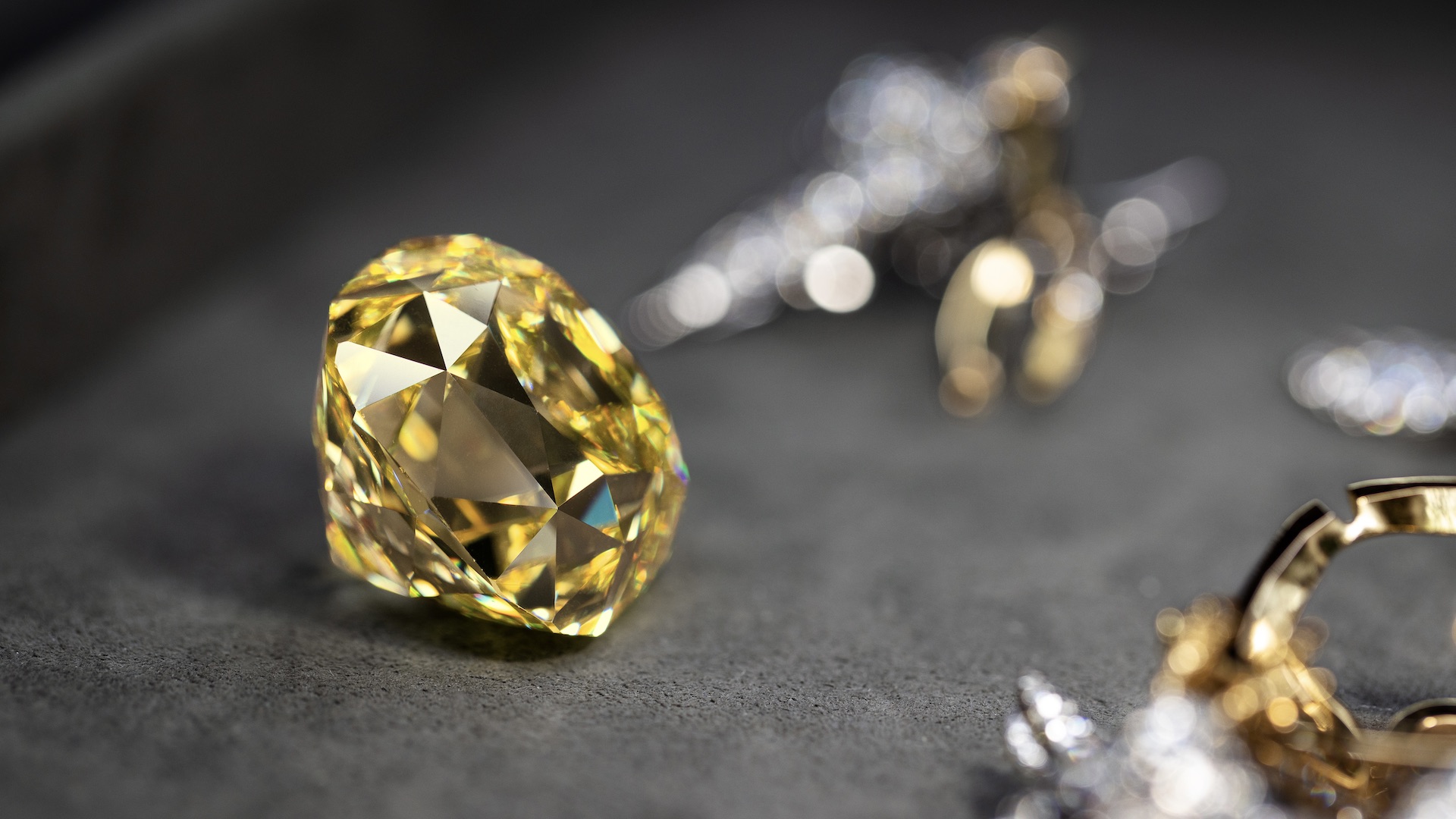
Among the world’s finest yellow diamonds, the Tiffany Diamond was discovered in South Africa’s famous Kimberley diamond mine, weighing a whopping 287.42 carats. Charles Lewis Tiffany, the founder of Tiffany & Co., purchased it for approximately $18,000—a fortune at the time.
Cutters studied the rough stone for an entire year to determine how to maximize its beauty and diamond color. Finally, expert cutters shaped it into a 128.54-carat cushion-cut brilliant, unlike any stone that had come before. It traveled the world as a loose stone in exhibitions until being mounted for the 1957 Tiffany Ball and worn by Mrs. Mary Whitehouse, the first of only four women who have ever had the privilege of dazzling in it.
Since then, jewelers have mounted the gem into three other pieces of jewelry, two of which feature original designs by the renowned Jean Schlumberger.
The purchase of the Tiffany diamond earned Charles Lewis Tiffany the nickname “The King of Diamonds.”

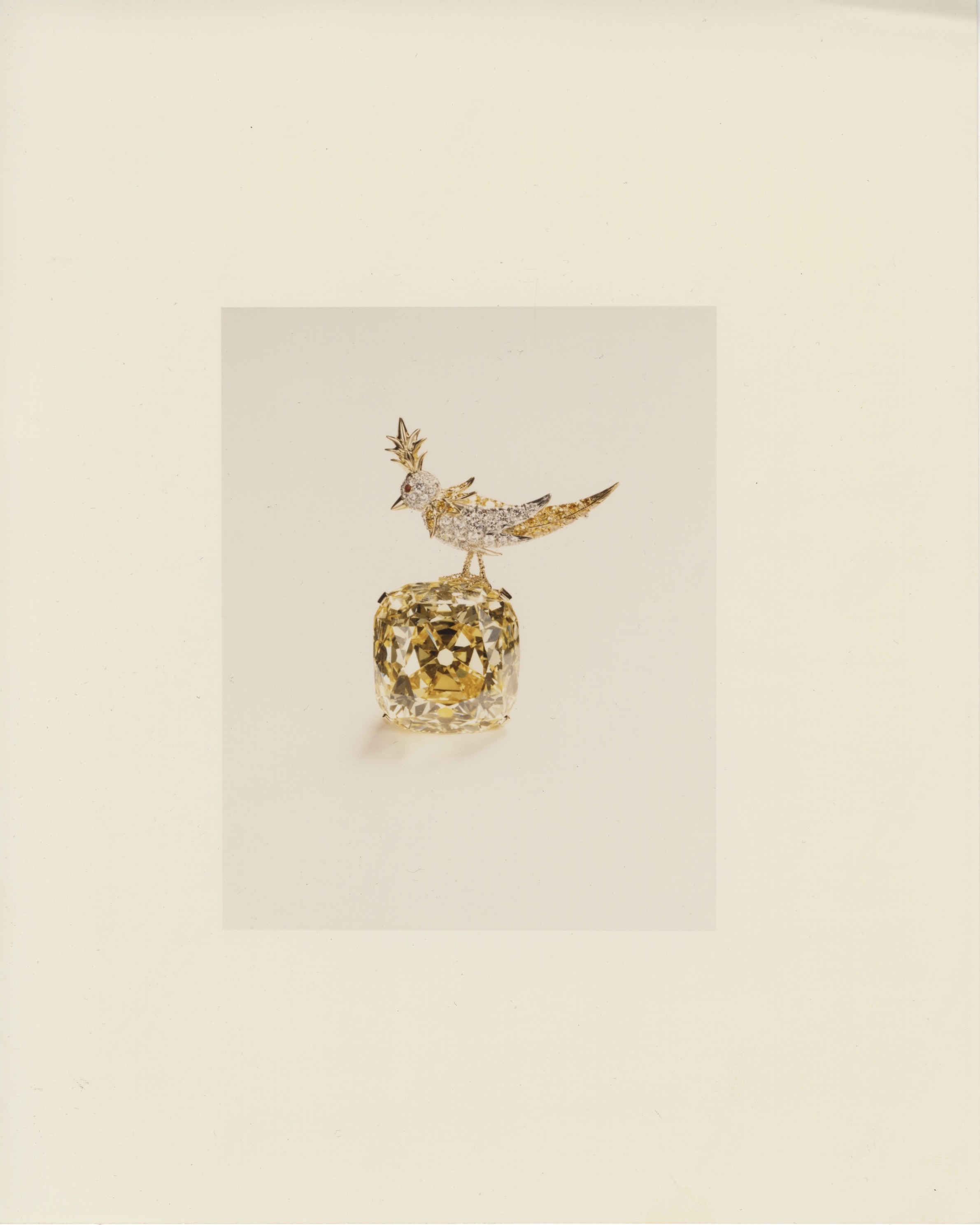
Schlumberger’s Ribbon Rosette necklace setting was the first worn by Audrey Hepburn to promote and briefly appear in the film Breakfast at Tiffany’s. In 1995, jewelers placed it in Schlumberger’s iconic Bird on a Rock setting for a museum exhibition.
Most recently, in 2012, to celebrate Tiffany’s 175th Anniversary, the Tiffany Diamond was set in a necklace featuring over 100 carats of other diamonds. It was later slightly modified for Lady Gaga to wear to the 2019 Oscars, one of the all-time greatest red carpet moments, and was worn shortly after by Beyoncé in a Tiffany & Co. ad campaign. To date, those four lucky ladies are the only ones to have had the honor of wearing it.
The Dresden Green Diamond
Diamond Color: Green

Another historic colored diamond is the Dresden Green diamond, the largest and most famous green diamond known. It was discovered in the historic Golconda mines of India as early as the 17th century. The Dresden Green is a 41-carat, pear-shaped diamond, graded as a Natural Fancy Green with even diamond color distribution—a classification that underscores its extreme rarity.
Experts believe its long history began around 1722 when a London newspaper first mentioned it. The diamond was purchased in 1741 by Frederick Augustus II, whose father, Augustus I, had accumulated an impressive collection of jewels as the ruler of Saxony, the capital of Dresden.
Augustus I set aside a group of rooms in Dresden Castle to house his treasures, naming them the Green Vault. His son’s purchase of the green diamond added a cherry on top of an already brilliant collection.
Augustus the Strong commissioned the goldsmith Pallard in Vienna to design the Dresden into a Golden Fleece hat ornament set with many other diamonds.
Perhaps the most remarkable fact about this diamond is that, some 200 years later, it still remains in the same setting. From then on, the Green Vault containing the diamond more or less remained open, operating as a museum, until tragedy struck.
The Dresden Green Diamond was sold to Duke Frederick Augustus II in 1741 for an estimated sum equal to 4 tons of gold.
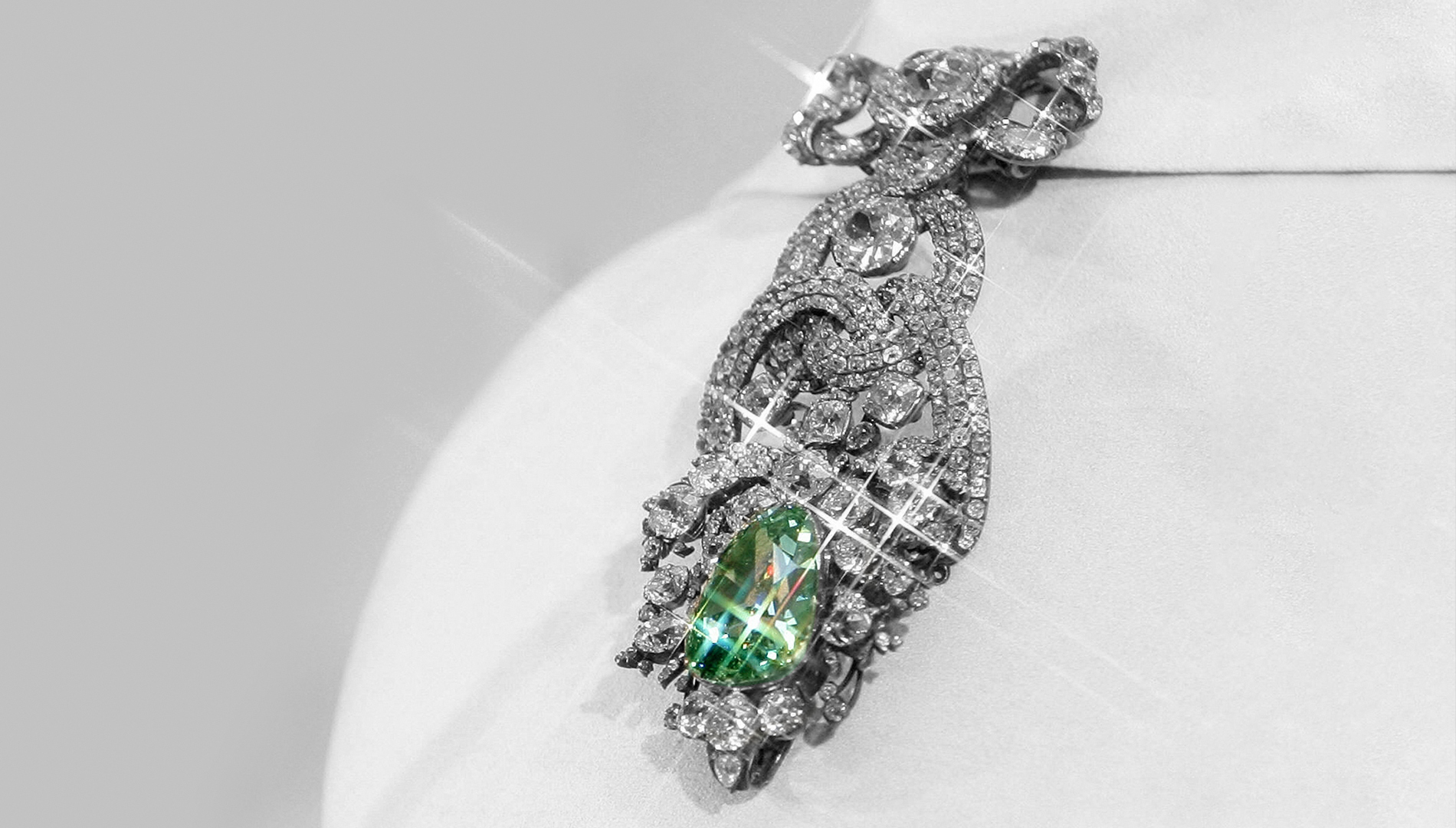
In 2019, thieves carried out what is perhaps the largest heist of its kind, stealing hundreds of millions of dollars worth of diamonds and jewelry from the Green Vault. Miraculously, the Dresden Green diamond was on a rare loan to the Metropolitan Museum of Art in New York and escaped loss.
Luckily, in 2022, following negotiations between the organized crime family involved and law enforcement, a significant portion of the artifacts, although slightly damaged, were finally returned to investigators. In May 2023, a court sentenced five individuals from the same crime family to years in prison for their role in the robbery.
The Hope Diamond
Diamond Color: Blue
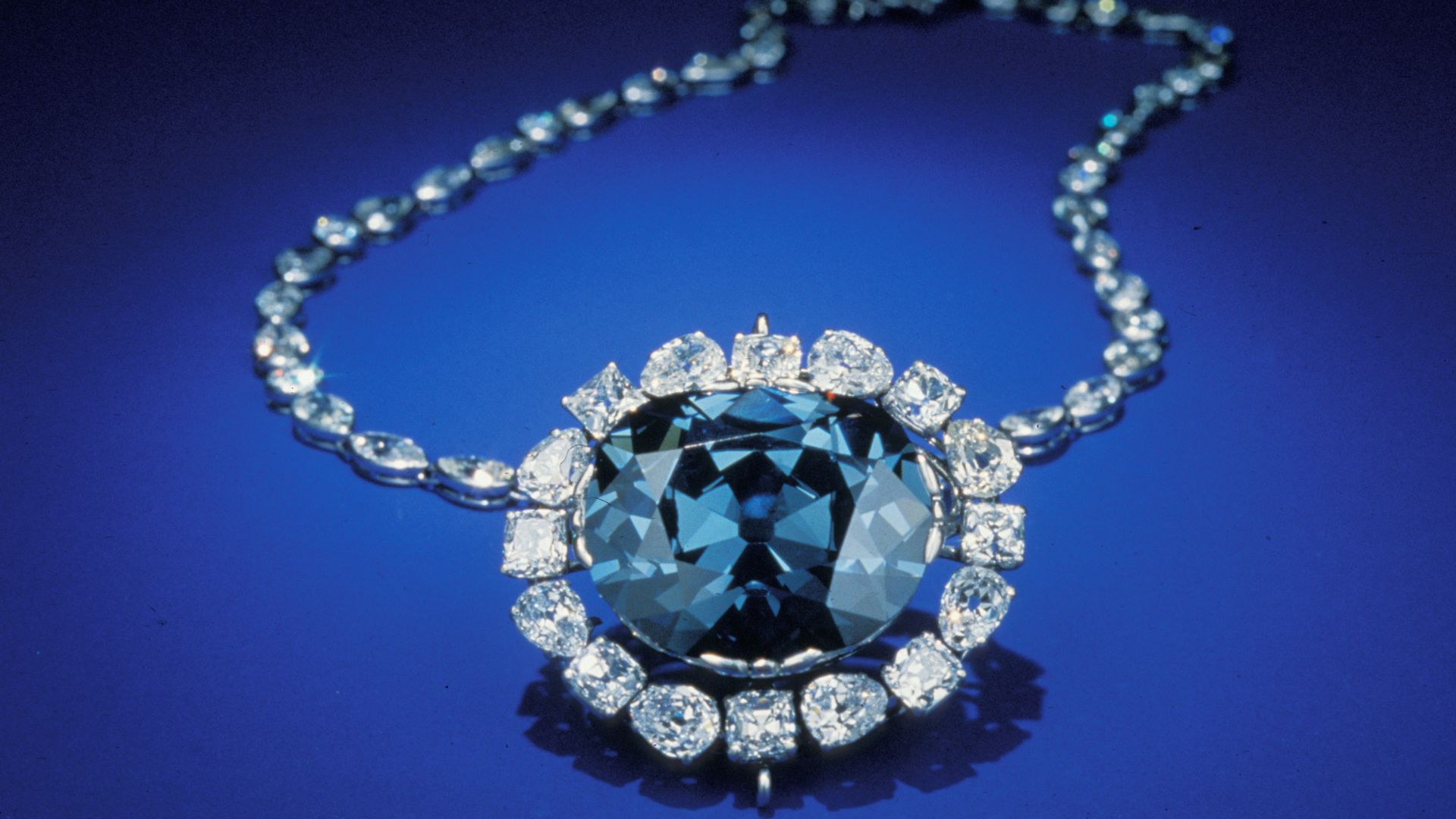
Housed in the Smithsonian Museum in Washington, D.C., the Hope Diamond is the world’s most famous, garnering at least three million visitors a year. Its legacy begins with the legendary French merchant Jean Baptiste Tavernier, who purchased the then 112 carat diamond from the Golconda region of India.
At the time, it was triangular and crudely cut. In 1668, Tavernier sold the diamond to King Louis XIV, who had the stone recut and set it in a neckpiece, naming it the “French Blue” after its diamond color. Later, in 1791, Louis XVI and Marie Antoinette attempted to flee France, turning over the diamond to the government from which it was ultimately stolen. Though Marie Antoinette’s beheading was the first of great hardships—and even deaths—that the diamond’s many owners have suffered, leading to what is now thought to be the curse of the Hope Diamond.
The diamond has been stolen, sold, and traded many times, and is thought to now bear a curse.
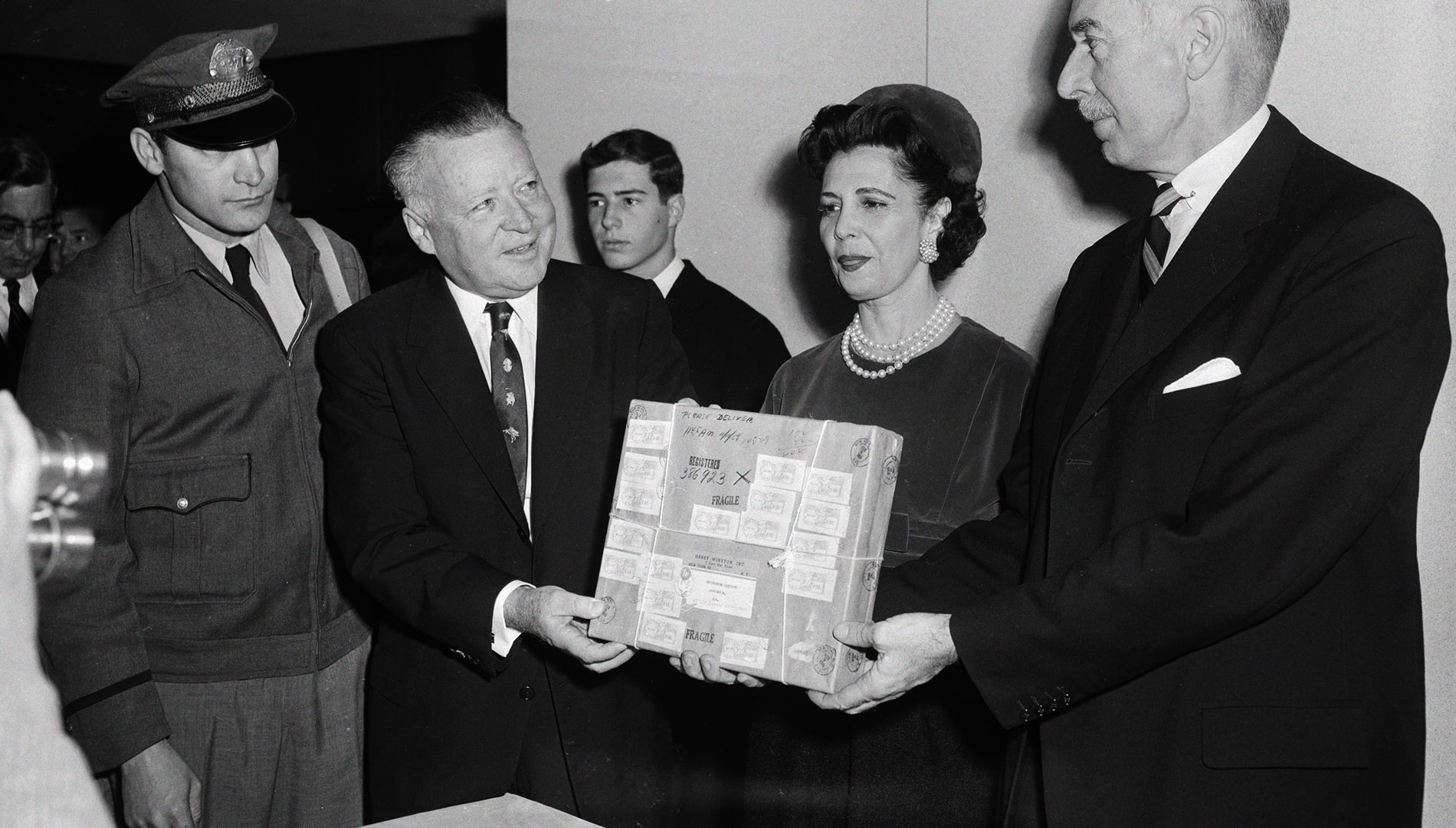
After its theft, history suggests that the diamond resurfaced in the early 1800s, recut into its current shape. King George IV acquired the stone until his death, when it is said to have been sold through private channels. Then, unexpectedly, the diamond resurfaced in 1839 under the ownership of Henry Philip Hope, from whom the diamond takes its name. The Hope family kept the diamond until 1901, when it was purchased by Pierre Cartier and sold to Mrs. Evalyn Walsh McLean, before being transformed into the diamond necklace we know today.
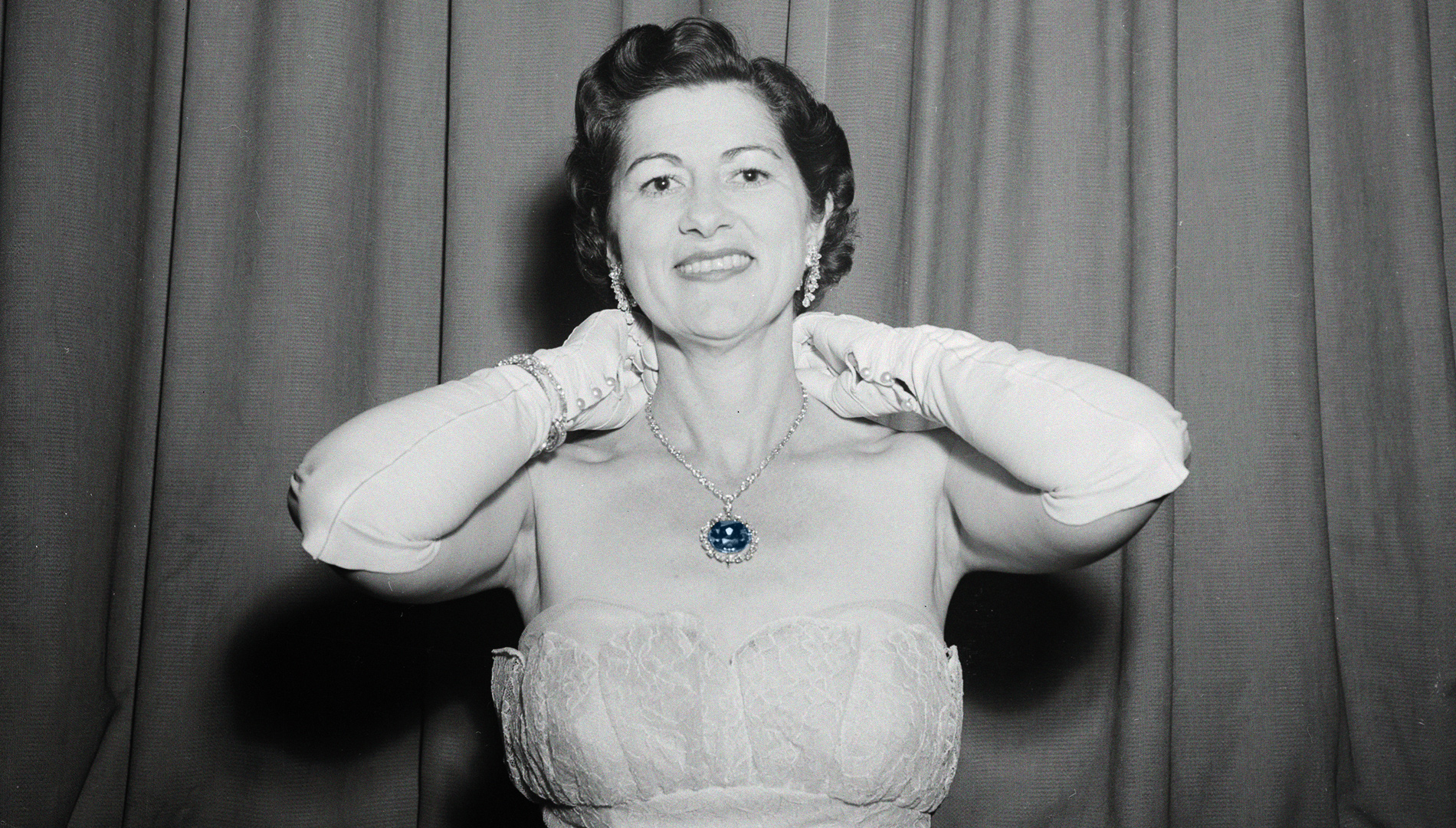
Famous jeweler Harry Winston became the next owner of the diamond, showcasing the stone at exhibits and charity events for ten years before donating it to the Smithsonian Institution in 1958. Amazingly, Winston sent the diamond from New York City to Washington, D.C. via none other than the United States Postal Service.
Now known to weigh 45.52 carats, the Hope Diamond is classified as a fancy dark grayish blue. Perhaps its most peculiar characteristic is that it glows a strong red diamond color for several seconds after being exposed to ultraviolet light, a phenomenon called phosphorescence. Today’s value for such incredible rarity and historical significance? A cool $400 million.
The Pink Star Diamond
Diamond Color: Pink
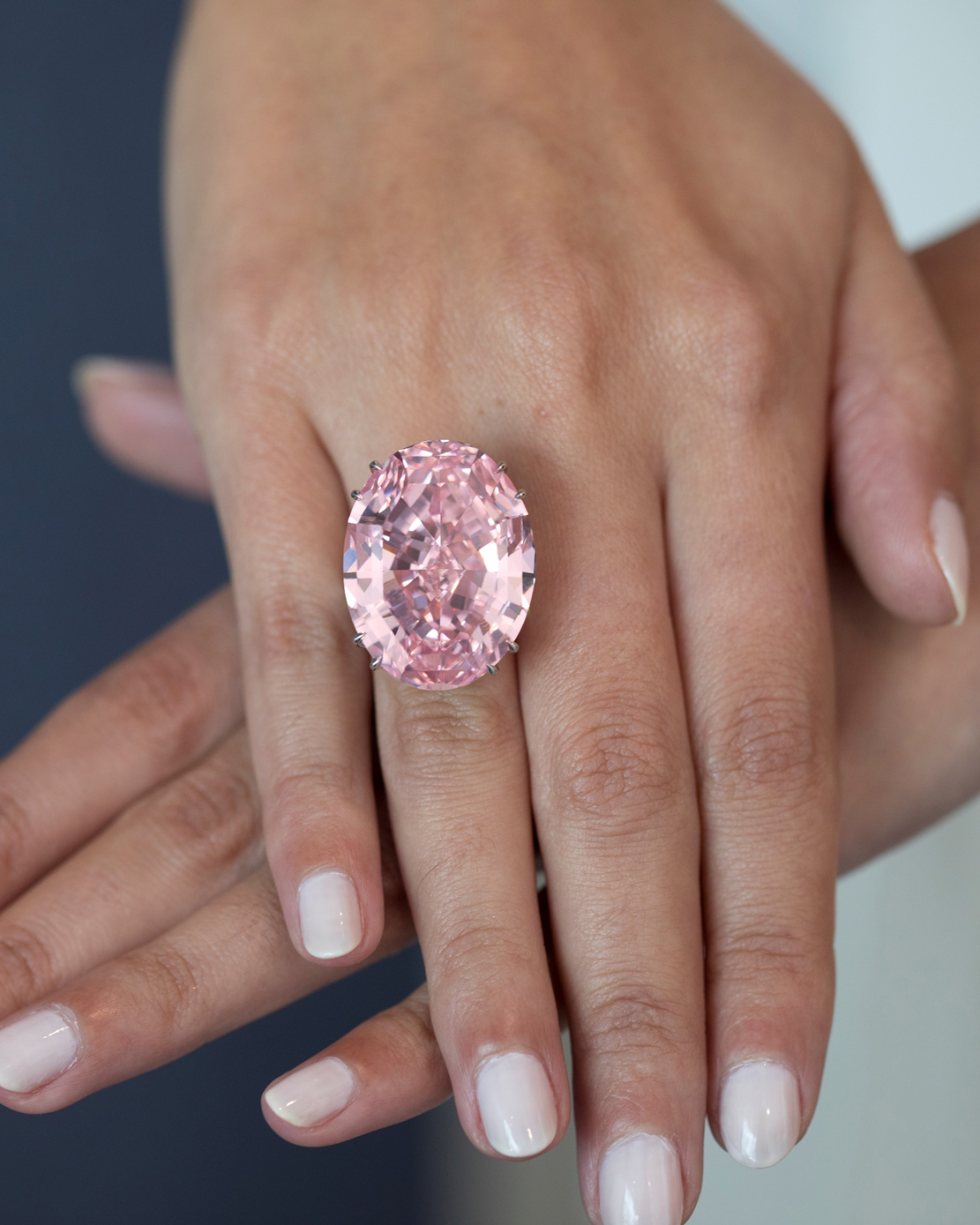
Of course, not all famous diamonds have hundreds of years of history. Over the last few decades, we have been lucky enough to continue finding extraordinary diamonds, among them the Pink Star. Previously known as the Steinmetz Pink, the gem was discovered by the DeBeers Group in 1999, weighing 132.5 carats in its rough form, and was sold to diamond cutters by the name of the Beny Steinmetz Group. Steinmetz took 20 months to cautiously cut the stone in order to preserve its incredible pink diamond color.
The finished product: a GIA-graded Fancy Vivid Pink stone of 59.60 carats, the largest known of this diamond color. The diamond was exhibited in museums until being auctioned by Sotheby’s in 2013 at a sale price of $83,187,381, a world record for any gemstone. But the buyer never settled the auction price, and it was again added to Sotheby’s inventory eventually selling in 2017 to Hong Kong jeweler Chow Tai Fook for $71.2 million, making it the most expensive diamond ever sold at auction.
It set a world auction record when it was purchased for $71.2 million.
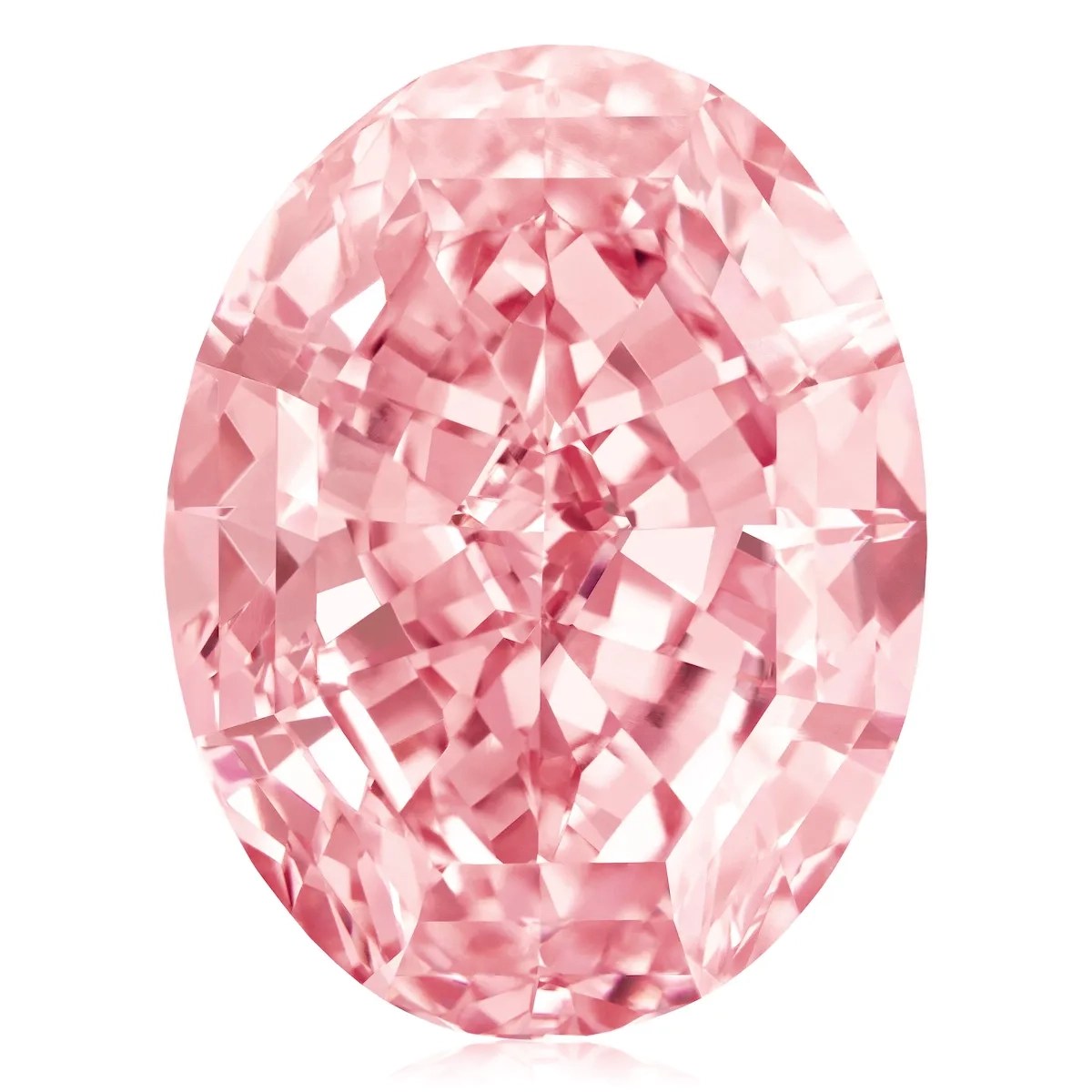
These famous colored diamonds are exceptional beyond words and, in many cases, even beyond value. Their diamond colors give new meaning to the term rare, born from the perfect natural alignment of atoms and geological conditions. Pair extreme rarity and intrinsic value with years of history, and you have a combination of factors that cannot be replicated by any other object on earth. Whether famous or not, all diamonds have a long history, starting a billion or more years ago to the present, regardless if they live on your finger, in a museum or still in the ground waiting for their big debut.
